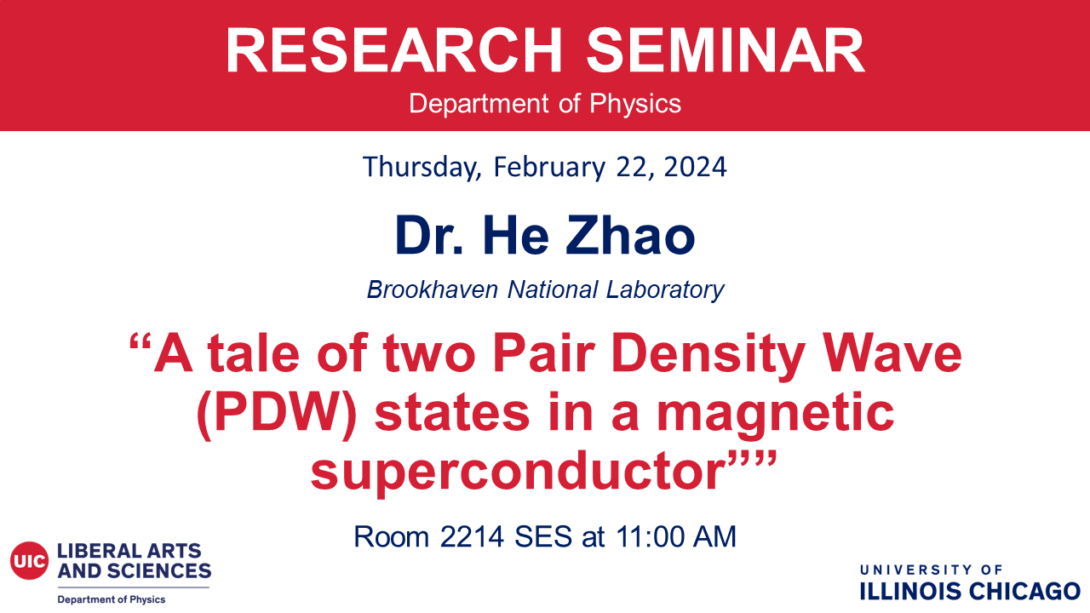Physics Seminar-“A tale of two Pair Density Wave (PDW) states in a magnetic superconductor” with Dr. He Zhao
Physics Seminar
February 22, 2024
11:00 AM - 12:00 PM
Location
SES 2214
Calendar
Download iCal File
Most known superconductors are characterized in equilibrium by a complex order parameter that is uniform in space, i.e., 𝛥𝑆~|𝛥0|𝑒𝑖𝜙. Yet, under specific conditions, an extraordinary superconducting state known as the Pair Density Wave (PDW) state can emerge. In this state, Cooper pairs possess a finite center-of-mass momentum and exhibit a non-uniform equilibrium order parameter. These spatially dependent order parameters (Δ𝑃(𝐫)) can generically exhibit variations in either their amplitude, phase or a combination of both. Using Spectroscopic Imaging Scanning Tunneling Microscopy (SI-STM), we've identified two primary PDW states in a magnetic iron-based superconductor, EuRbFe4As4 (ER-1144), which intrinsically consists of alternating layers of superconducting and magnetic properties. In the ferromagnetic superconducting phase, the first type is characterized by a superconducting gap that has a long-range, unidirectional spatial modulation (𝛥𝑃1~|𝛥0|cos(𝐐𝟏∙𝐫)) in the absence of any other translational symmetry breaking density-wave orders. The second type features an anisotropic Doppler energy shift in reciprocal space due to the phase winding (𝛥𝑃2~|𝛥0|𝑒𝑖𝐐𝟐∙𝐫). In contrast, all the striking features are completely suppressed crossing the magnetic transition. Additionally, both PDW states are influenced by out-of-plane external magnetic field, as substantiated by the Bogoliubov quasiparticle spectrum imaging. Finally, I will conclude by outlining how pushing the limits of current scanning probe microscopy techniques will empower us to uncover and describe novel emergent phenomena and exotic quantum states in the realm of strongly correlated quantum materials and devices.
Date posted
Jan 29, 2024
Date updated
Feb 15, 2024